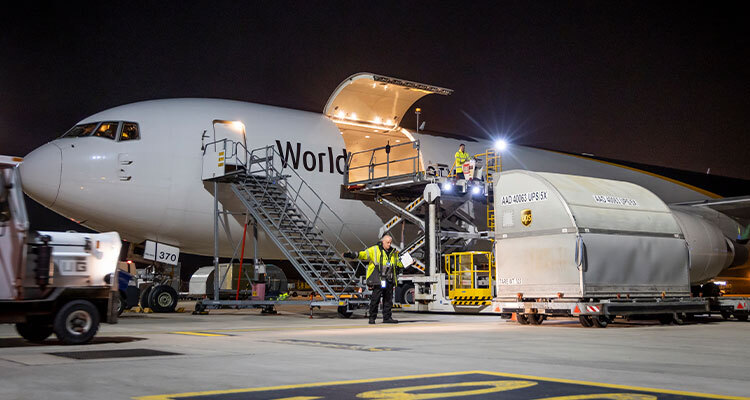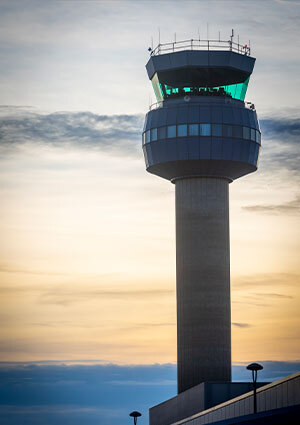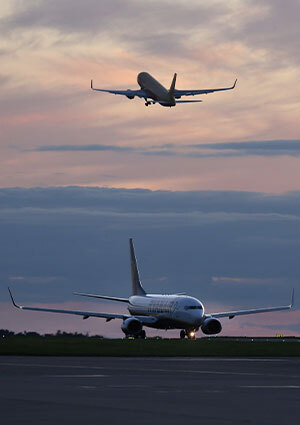
Explore East Midlands Airport’s vital role in international trade
A key player in the aviation industry, East Midlands Airport (EMA), is operated by the Manchester Airports Group (MAG) and forms part of a prestigious airport network that includes Manchester and Stansted. With its strategic location in the heart of England, EMA serves as a vital transportation hub, connecting over 4.2 million passengers to more than 60 destinations across Europe. Not only does EMA cater to passenger travel, but it also boasts the UK’s largest dedicated air cargo operation. Handling an impressive volume of over 440,000 tons of goods annually, EMA plays a pivotal role in facilitating international trade and logistics. One of EMA’s standout advantages is its proximity to most of the population in England and Wales. Thus, EMA offers unparalleled accessibility and convenience for both passengers and businesses. This prime location positions EMA as an ideal choice for travel, commerce, and distribution. Managing Director, Steve Griffiths, sheds some light on the airport’s history.
 “MAG acquired EMA in the early 2000s. Prior to MAG’s ownership, EMA was owned by National Express, and before that, it was jointly owned by the local authorities of Derbyshire, Nottinghamshire, and Leicestershire. The airport was inaugurated in 1965, and its location was strategically chosen due to its proximity to the future M1 corridor. Although the M1 had not yet been constructed at that time, the planned route was already known. EMA’s advantageous position near the motorway network in the heart of England makes it easily accessible for passengers, contributing to its thriving air cargo operations that continue to this day. Currently, EMA serves several airlines, including Ryanair, JET2.com, TUI, Aer Lingus, Eastern Airways, and Blue Islands. We expect to handle approximately 4.2 million passengers this year, and more than half of them travel to Spain or Spanish islands. Furthermore, most of our customers are leisure travelers, with a small percentage being business travelers,” he details.
“MAG acquired EMA in the early 2000s. Prior to MAG’s ownership, EMA was owned by National Express, and before that, it was jointly owned by the local authorities of Derbyshire, Nottinghamshire, and Leicestershire. The airport was inaugurated in 1965, and its location was strategically chosen due to its proximity to the future M1 corridor. Although the M1 had not yet been constructed at that time, the planned route was already known. EMA’s advantageous position near the motorway network in the heart of England makes it easily accessible for passengers, contributing to its thriving air cargo operations that continue to this day. Currently, EMA serves several airlines, including Ryanair, JET2.com, TUI, Aer Lingus, Eastern Airways, and Blue Islands. We expect to handle approximately 4.2 million passengers this year, and more than half of them travel to Spain or Spanish islands. Furthermore, most of our customers are leisure travelers, with a small percentage being business travelers,” he details.
People and products
The operations of EMA can be categorized into two distinct areas, namely the services provided to passengers and its air cargo operations. Steve begins by detailing the range of services EMA provides for its passengers. “EMA plays a crucial role in connecting people from the heart of the country to their preferred holiday destinations. We differentiate ourselves by offering effortless and great value travel, which aligns with the preferences of our core audience. Indeed, most of our passengers can clear security in under 15 minutes, making their experience easier and convenient. I believe this capability attracts passengers, even if it means they need to travel a bit further. EMA is also particularly popular with passengers who require extra assistance thanks to our assisted travel service. The airport has been recognized by the Civil Aviation Authority (CAA) as one of the most accessible airports in the UK for individuals needing additional support. Moreover, EMA is also a finalist in the forthcoming Airport Honour Awards in the Accessible Airport Category and has received the Business Disability Forum’s ‘Disability Smart Inclusive Customer Service’ award this year.
 “On the air cargo front, we hold the UK’s largest share of the freight-only aircraft market. While Heathrow does handle more cargo annually than EMA, most goods transported through Heathrow are carried in the belly hold of passenger planes. As a dedicated cargo operation, we can provide a better, more reliable service which isn’t vulnerable to passenger flight prioritization. Offering connections to 185 major cities worldwide, the airport provides one-stop access to three-quarters of the world’s top-ranked cities and over half of the second-tier cities. This extensive global connectivity positions us as a national asset, handling over one million individual packages every night, totaling around 440,000 tons of cargo per year. As a result, our operations contribute approximately £443 million in Gross Value Added to the regional economy. Additionally, DHL, UPS, and FedEx have chosen EMA as their primary hub in the UK, forming part of their US-UK-Europe network. These companies have invested in expanding and improving their facilities at the airport, along with their aircraft fleets. Royal Mail and several other charter cargo operators also operate out of EMA, with capacity to attract more cargo operators. Our air cargo services primarily cater to advanced manufacturers of high-value goods, followed by the aerospace, healthcare pharmaceuticals, and automotive sectors,” Steve elaborates.
“On the air cargo front, we hold the UK’s largest share of the freight-only aircraft market. While Heathrow does handle more cargo annually than EMA, most goods transported through Heathrow are carried in the belly hold of passenger planes. As a dedicated cargo operation, we can provide a better, more reliable service which isn’t vulnerable to passenger flight prioritization. Offering connections to 185 major cities worldwide, the airport provides one-stop access to three-quarters of the world’s top-ranked cities and over half of the second-tier cities. This extensive global connectivity positions us as a national asset, handling over one million individual packages every night, totaling around 440,000 tons of cargo per year. As a result, our operations contribute approximately £443 million in Gross Value Added to the regional economy. Additionally, DHL, UPS, and FedEx have chosen EMA as their primary hub in the UK, forming part of their US-UK-Europe network. These companies have invested in expanding and improving their facilities at the airport, along with their aircraft fleets. Royal Mail and several other charter cargo operators also operate out of EMA, with capacity to attract more cargo operators. Our air cargo services primarily cater to advanced manufacturers of high-value goods, followed by the aerospace, healthcare pharmaceuticals, and automotive sectors,” Steve elaborates.
Carbon-free flying
EMA has a long-standing commitment to tackling climate change, becoming carbon neutral in 2012. As part of that, Steve discusses the airport’s role in the largest inland hydrogen cluster. “The initiative, called East Midlands Hydrogen, is a partnership involving D2N2 Local Enterprise Partnership, Leicester and Leicestershire Enterprise Partnership, Cadent, Uniper, Toyota, Midlands Engine, and East Midlands Freeport. The partnership aims to establish a connection between hydrogen supply and demand through a new 100 percent hydrogen pipeline, resulting in significant economic and environmental benefits for the region. Our role within that initiative is as a user of an estimated 700,000 liters of liquid hydrogen a day by 2050, helping to pave the way for carbon-free flying from the Midlands gateway. EMA is among the 70 sites in the region that, collectively, have the potential to achieve carbon savings of 1.9 million tons per year,” he informs.
Through its strategic location and decades of development, EMA has cemented its role as a premier UK transportation and air cargo hub. “To uphold this position, we are working on a master plan which will result in significant investment at the airport,” Steve ends.